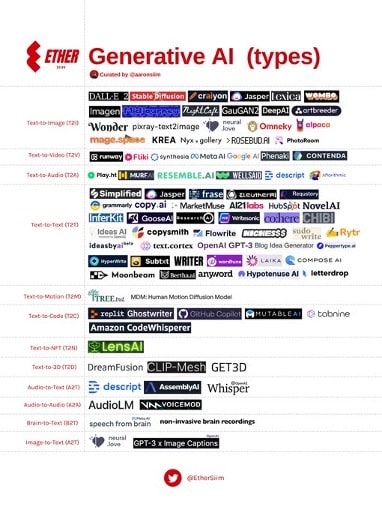People used to complain that everything was much too slow when dealing with horses. They demanded more and faster horses. Then the car came out. Currently, (almost) everyone complains about being structurally overburdened with tasks, about too much administration, too much information, etc. – leading to a demand in more and higher performing employees. Is generative artificial intelligence, as can be seen in ChatGPT, the faster-horses-moment of knowledge work? Or one of them?
What is ChatGPT, anyway? ChatGPT is a variant of the Generative Pre-training Transformer (GPT) language model, designed to produce text in a human conversational context. It specializes in generating responses in natural language when a user provides a few details. This makes the tool applicable to a wide range of business applications. At the same time, we read manifold warnings, for instance that schools and universities would become obsolete with tools like that. Institutions that are designed to mainly train memorization better become obsolete quickly anyway and be replaced by a concept that that teaches students HOW to think, rather than WHAT to think (i.e. memorize). Let’s get back to this point a little later.
Since the 1960s, the fear of job loss due to robots or Artificial Intelligence has been all over (social) media. The result is that today, as humans, we perform higher-value activities and allow machines to take over more and more strenuous, unhealthy or mindless tasks. Today, instead of assembling by hand, employees in industry production control entire machine parks. Instead of looming mass unemployment as has been expected, businesses desperately seek employees.
On top, everyone complains about structural overload. Do you know anyone who is bored at work? Except for maybe some security guards these people are hard to find.
The main challenge of management in the 20th century was to increase the productivity of physical labor. The main challenge of management in the 21st century is to increase the productivity of knowledge work, to quote Peter Drucker. How far have we come so far?
Are you also dealing with too much bureaucracy, dozens of form and reports? That is a mass phenomenon. Each and every day, new requirements appear, both from legislation and the internal red tape.
What speaks against using generative artificial intelligence like ChatGPT intensively to relieve knowledge workers of mindless and repetitive tasks? Why not have a report drafted in advance? Why not have a piece of text roughly put together, and then just having to professionally complete it?
Don’t expect enlightenment from a report written by ChatGPT. In one of my university lectures, my students sent the questions of a mock exam through ChatGPT. Of course, they did. We looked at the results together and it was clear that ChatGPT would have failed the exam. But: a contribution to a basic framework and some selected correct aspects were there. In an exam today, we should mostly require the application of knowledge and not memorization.
In the business world, however, generative AI comes in handy in an environment of information overload and burdensome administration. Systematic, sensible use can provide value and free up time for work that humans can do better, such as conducting a delicate negotiation, consulting with customers, calling a client or business partner, listening to a team member’s concerns and helping to resolve issues.
Let’s have the machine do what the machine does better: mass processing. And let’s have humans do what humans can do better – but for which they often lack the time.
Generative AI – an overview
So, what’s out there already in the field of generative AI? @aaronsiim (an account I highly recommend following!) has offered a very handy overview on Twitter, which we are happy to link here.

Tasks for ChatGPT and its “colleagues”
Here are some of the ways companies can use tools like ChatGPT:
– Brainstorming ideas
– Creating first drafts of content of all types
– Creating first drafts of research
– Creating tutorials and manuals or first drafts thereof
– Automating or improving simple processes
– Planning follow-ups
– Writing simple computer code
– Translations (top quality, see e.g. DeepL)
We were considering using ChatGPT to write an editorial piece about ChatGPT – but decided against it because of the bias 😊. We may soon revise this decision, though.
The idea of a police officer conducting the interrogation and an AI transcribing it is simply wonderful! Why should the valuable (wo)manpower of a police officer be wasted on typing a report? In this case, a so-called on-premise AI will likely be used, but there are few limits to the creativity of freeing up valuable human effort.
Cybersecurity and data protection
In IT security training, it is recommended to foresee that ChatGPT is not a suitable application for internal content processing for companies in relevant market positions.
ChatGPT and workplaces
Of course, there is (and has been for decades) a fear that AI will and does cost jobs. At the same time, it also creates jobs and increases the productivity of the existing workforce. Professionals let ChatGPT research content for the next blog post, draft the script for the next instructional video, and more. We can use ChatGPT as a personal assistant at all levels of the organization and make our workforce significantly more productive in areas where a personal assistant might be convenient but unaffordable.
The ideal Austrian application of ChatGPT and would give Vienna the Faster-Fiaker moment: ChatGPT does the work while you go for a coffee with your customers.









